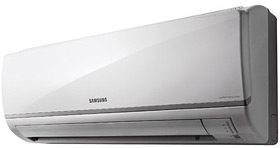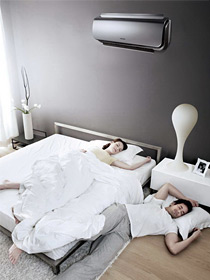How to choose and install a split system
 |
It is necessary to take into account the features of the room itself. A wall-mounted indoor unit can be installed if the free wall area allows it. If the walls are covered with furniture, it is better to opt for a ceiling or floor device that is installed directly on the floor. Most often they are used for small rooms where intensive air pressure is not needed. The multi-split system is suitable for air conditioning of several rooms.
The choice of a split system also depends on whether it will be used only for air cooling or also for heating, and at what temperature it is planned to operate it. Although special models of air conditioners have been created for low temperatures, practice shows that it is difficult to fully heat rooms with their help — it is better to use heaters.
After you have got an idea of the possibilities of split systems and have approximately decided which air conditioner will suit you, you can call a representative of the company to select specific equipment taking into account the characteristics of your room. Most companies provide this service for free. The specialist will calculate the power of the air conditioner, taking into account such factors as the number of household appliances, the degree of its workload, the area of the room itself, the thickness of the walls, the height of the ceiling. If you ventured to purchase a split system yourself, you should proceed from the calculation of about 100 watts per 1 square metre of the apartment, plus the power for cooling household appliances - 2 kW for a refrigerator, 100-200 watts for an electric kettle, 300-400 watts for a computer. If the room has a large glazed area or windows facing south, the final figure should be increased by 15-20%. Of course, this calculation is very approximate.
 |
You can more accurately calculate the power of the air conditioner using the formula: Q = S * h * q, where Q is the heat input (W), S is the area of the room (m².), h is its height (m), q is the coefficient for the south side equal to 40 W/ kb.m., for the north — 30 W/kb.m. To the resulting number, add the sum of the heat emissions of household appliances and apartment residents – in a calm state, one person emits 100 watts of heat, in an active one, for example, in the gym – 300 watts, a computer gives 300 watts, other household appliances – 1/3 of their passport power. Summing up the data on heat flows and heat emissions, you will get the required power of the air conditioner. This formula can be used only for premises in capital buildings with a standard glazing area.
Then you need to choose a place to install the external unit of the system. If you place it in a hard-to-reach place, for example, far from the window, then you will have to call climbers or use specialized equipment to carry out maintenance. On the other hand, noise from the air conditioning unit installed near the window itself can interfere with an open window. For most split systems, the distance between the internal and external unit should not exceed 15 metres, otherwise the compressor will not be able to ensure the normal operation of the air conditioner.
The next step will be to find a company that will install an air conditioner. It can be either the company whose specialist went to your object to make calculations, or another one chosen by you as a result of a kind of mini-tender. The installation company must have its own service centre, where the air conditioner can be serviced under warranty obligations. If she does not have her own service centre, you will have to contact the one indicated in the warranty card, and this very often means additional costs, in particular, for calling a specialist. It is desirable that the company has been working in this market for several years and has its own office, where you can contact if necessary.
It is better to entrust the installation of an air conditioner to specialists. Often, the installation of split systems is carried out by the same companies that sell them - this allows you to avoid equipment breakdowns as a result of poor–quality installation. Pay attention to the warranty period – it can range from one and a half to fifteen years, depending on the manufacturer. As practice shows, the longer the warranty period, the better and more expensive the device. Once or twice a year, the split system is serviced, which includes refueling with freon, cleaning filters and other operations. A separate contract is usually concluded for carrying out service work.
Articles, reviews, useful tips
All materials















